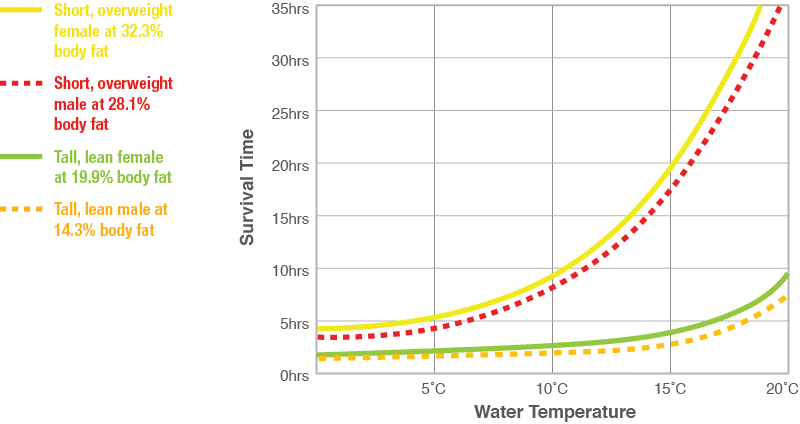Dr Gordon Giesbrecht coined the phrase 1-10-1 to describe the three critical phases of cold water immersion. Over many years, Gordon has researched the effects of cold water immersion on hundreds of subjects and has personally experienced those effects himself over 30 times.
1 - 10 - 1
1-10-1 is a simple way to remember the first three phases of cold water immersion and the approximate time each phase takes.
1 - Cold Shock
An initial deep and sudden Gasp followed by hyperventilation that can be as much as 600-1000% greater than normal breathing. You must keep your airway clear or run the risk of drowning. Cold Shock will pass in about 1 minute. During that time concentrate on avoiding panic and getting control of your breathing. Wearing a lifejacket during this phase is critically important to keep you afloat and breathing.
10 - Cold Incapacitation
Over approximately the next 10 minutes you will lose the effective use of your fingers, arms and legs for any meaningful movement. Concentrate on self rescue initially, and if that isn’t possible, prepare to have a way to keep your airway clear to wait for rescue. Swim failure will occur within these critical minutes and if you are in the water without a lifejacket, drowning will likely occur.
1 - Hypothermia
Even in ice water it could take approximately 1 hour before becoming unconscious due to Hypothermia. If you understand the aspects of hypothermia, techniques of how to delay it, self rescue and calling for help, your chances of survival and rescue will be dramatically increased.

